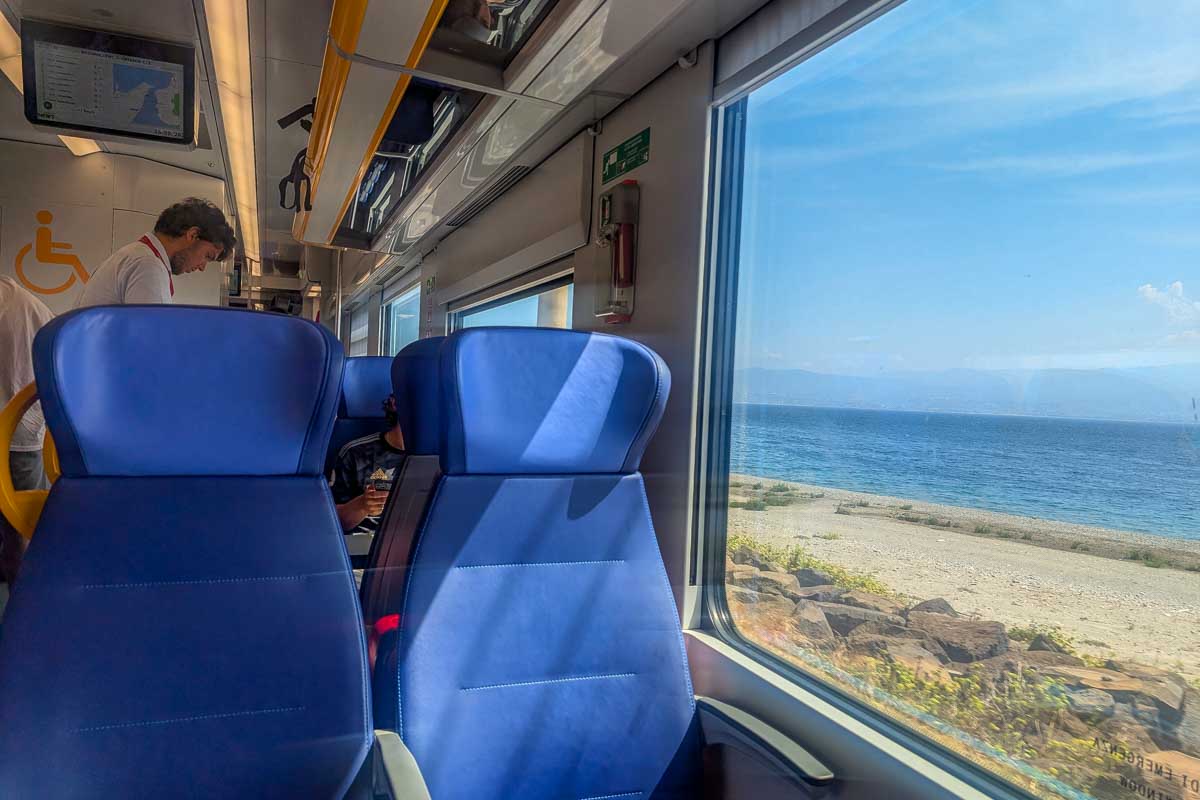How To Get Around Europe
Planning a trip to Europe but not sure how you’ll get around? We’ve got you covered.
Europe is incredibly well-connected, with plenty of transportation options to suit every type of traveler. Whether you’re zipping between capital cities or hopping from island to island, there’s a way to get there that fits your budget and travel style and we’re here to help you find it.
We’ve spent a lot of time traveling around Europe, and we’ve learned when it’s worth renting a car and when buses or rail are your best bet. Sometimes, we’ve learned it the hard way! But getting around Europe really is part of the adventure, so buckle up and we’ll walk you through each option, when to use it, and who it’s best for. Let’s go!
Europe Transportation Overview
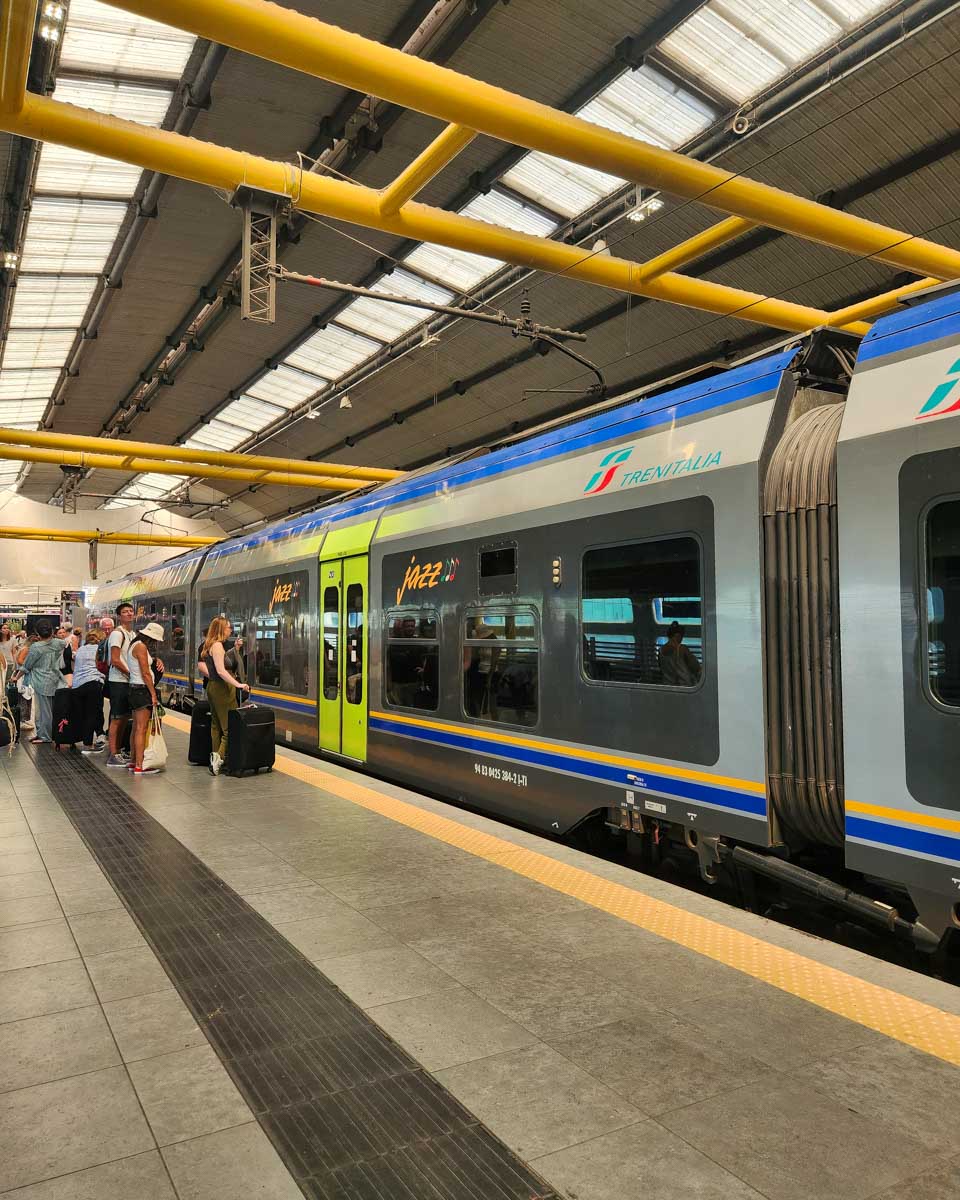

What we love about Europe is that it’s really easy to get around – you just need a little know-how! The entire continent is incredibly well-connected, with fast trains, cheap flights, scenic drives, and even ferries linking countries and cities. So whether you’re planning a short city break or a multi-country adventure, there’s a transportation option that fits your style and budget.
Some ways of getting around make more sense depending on how long your trip is, how many places you’re visiting, and the kind of travel experience you’re after. In many cases, we’ve found that using a mix of transport types is the smartest move. To help you figure out what works best, we’ve broken down each major option below, including when to use it and who it’s best for.
- Trains – Trains are one of the most popular ways to travel between cities and countries in Europe. They’re usually fast and comfortable, so they work well for mid-range distances and offer a stress-free alternative to flying or driving.
- Buses – Buses are the cheapest way to get around and often serve routes that trains don’t. They’re slower than trains, but they’re great for budget travelers and last-minute trips.
- Flights – Budget airlines make it easy (and often surprisingly cheap) to cover long distances quickly. Flying is a great choice for longer distances or when train routes aren’t convenient.
- Car Rentals – Renting a car gives you total freedom and is perfect for exploring rural areas and regions with limited public transit. Not to mention, there are some incredibly scenic drives to enjoy!
- City Public Transit – Trams, metros, and buses make it easy to get around within European cities. They’re affordable and efficient, and they work perfectly for urban exploration.
- Rideshares & Taxis – These come in handy for short hops, airport transfers, or late-night rides when public transit isn’t running. Apps like Uber and Bolt are easy to use and often cheaper than traditional taxis, plus they help you avoid getting scammed!
- Ferries – Ferries can be a scenic way to travel between islands or across bodies of water. They’re a popular option in places like Greece and Croatia, and you can also use them to travel between coastal countries.
Trains

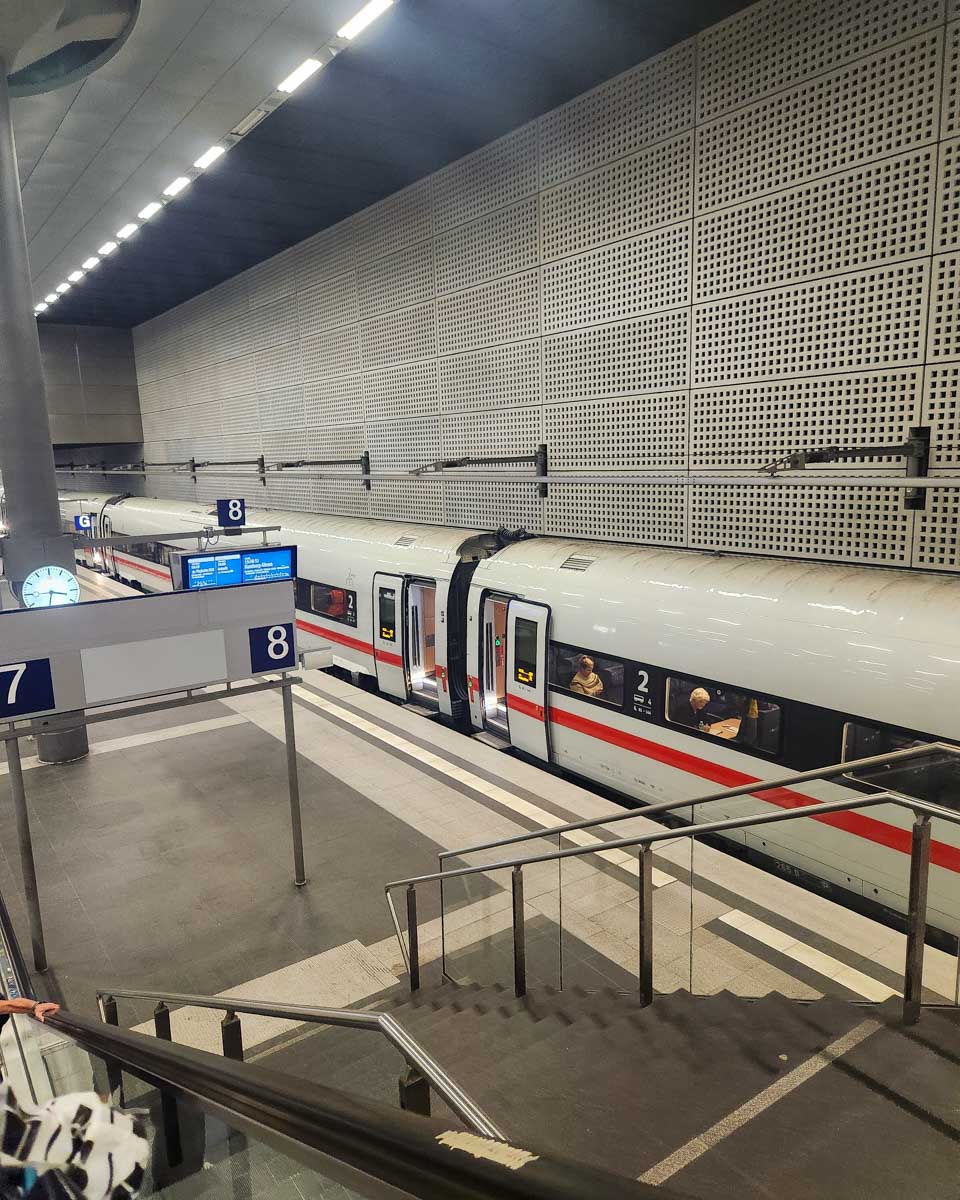
- When it makes sense: Ideal for mid-distance travel (2–6 hrs), scenic routes, or city-hopping.
- Best for: Older travelers, first-timers, couples, and travelers who value comfort and ease.
- Budget: Medium to high. Tickets can be pricey if booked last minute. Eurail/Interrail passes can save you money if you’re doing lots of train travel.
- Pros: Comfortable, scenic, spacious, no airport security hassles, no driving stress
- Cons: Can be expensive, reservations often required, and not always ideal for rural areas.
- Where to book: Trainline, Omio, RailEurope, Rail Planner app, and Interrail/Eurail website (if you have a pass)
Trains are one of the most enjoyable and efficient ways to travel around Europe! The rail network is vast, well-maintained, and connects most major cities. We think it’s perfect for hopping between neighboring countries and mid-distance trips.
Many countries have high-speed railways, too. France has the TGV, Spain has the AVE, and Germany has the ICE. All of these networks can whisk you across the continent in just a few hours, often from city center to city center, without the hassle of airports or long security lines.
We also love traveling by train because it’s usually more comfortable than flying or traveling by bus. The seats are roomy and it’s easy to get up, and there’s usually a café car where you can grab a drink or snack whenever you want. Many routes offer stunning views, too.
Unlike flying, you usually don’t have to pay extra for luggage or worry about the 100ml liquids rule! However, train tickets can be pricey if you book last-minute, especially on popular routes. If you’re planning a longer trip or visiting multiple countries, a Eurail (for non-EU residents) or Interrail (for EU residents) pass can help save money and give you more flexibility. Just note that some high-speed trains still require seat reservations, which may come with extra fees.
Overall, trains strike a great balance between comfort, speed, and convenience. We find this to be one of the most enjoyable ways to travel around Europe!
Should You Get a Train Pass?
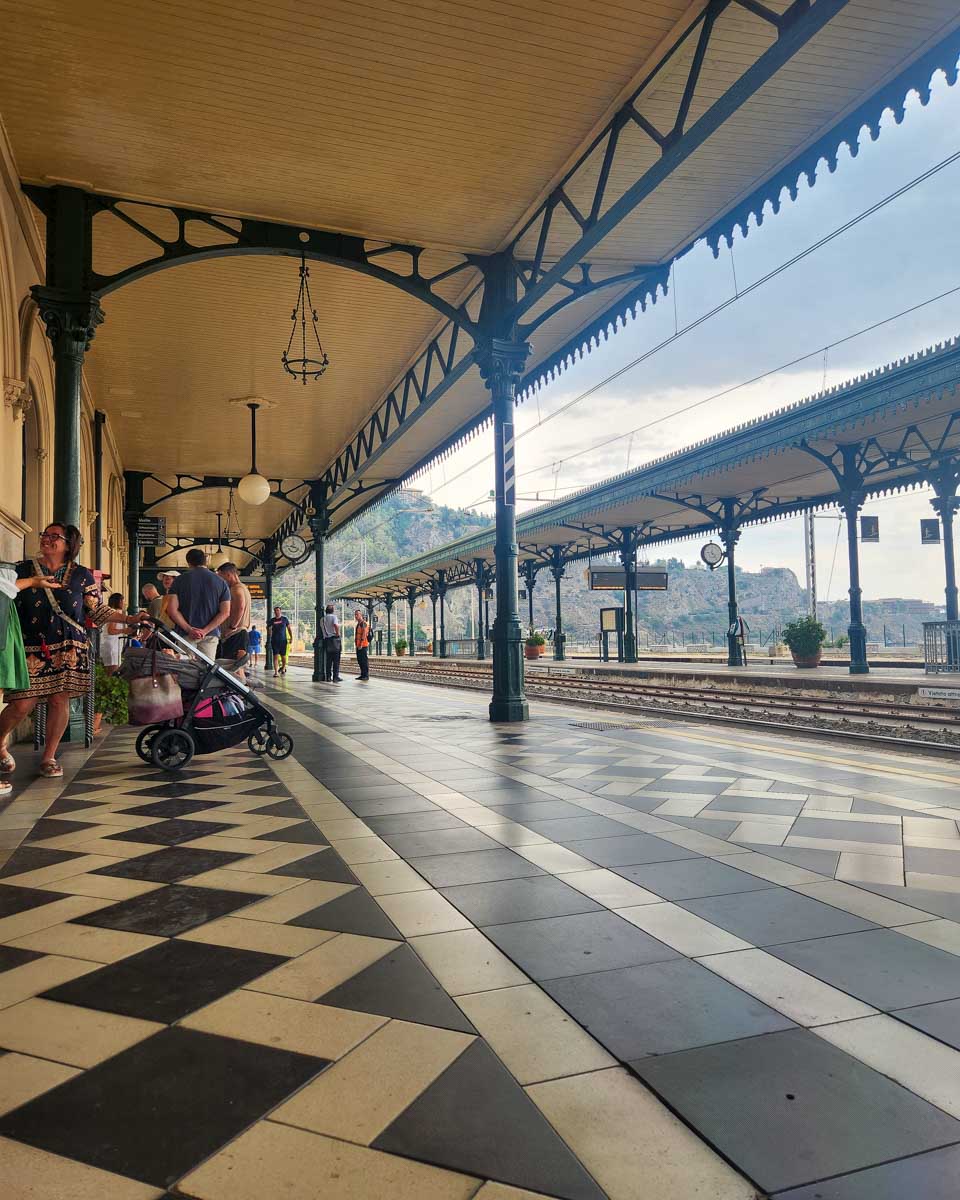
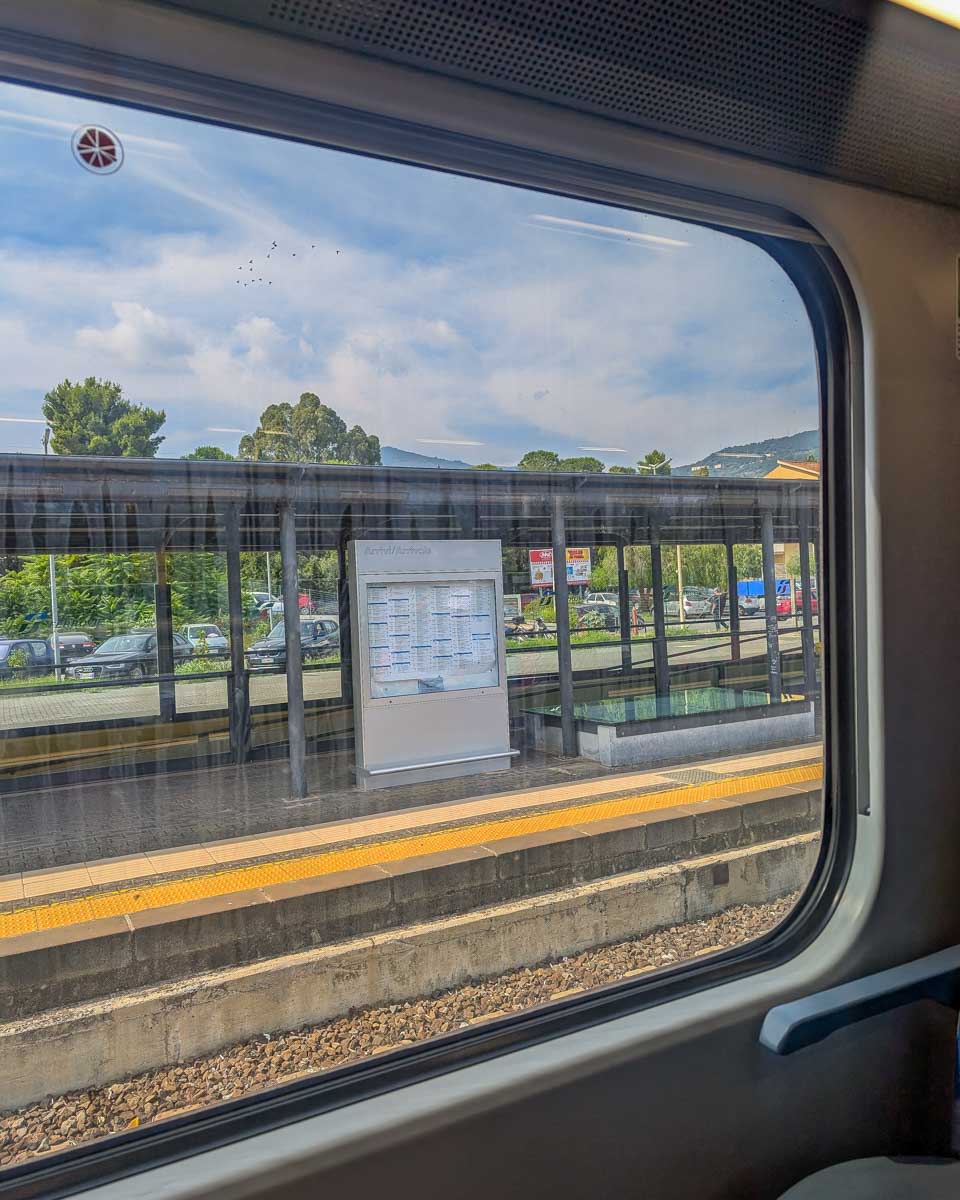
If you’re planning to travel extensively by train in Europe, a Eurail or Interrail pass can be a game-changer. These all-in-one passes give you access to nearly all trains (and even some ferry lines) in 33 participating countries, making it easy to explore without the hassle of booking individual tickets.
The main difference? Eurail is for non-EU residents, while Interrail is for EU citizens and residents. Both offer flexible options: you can buy a One Country Pass if you’re staying in a single country, or a Global Pass if you’re hopping between several. Prices vary based on trip length and pass type, but expect to pay around €200–€600+.
A pass makes the most sense if you’re visiting multiple countries, traveling for two weeks or more, or doing a fast-paced itinerary. It’s also a great option for travelers who like to stay flexible, since regional and slower trains don’t require reservations —you can simply hop on and go!
While you’ll still need to book seats on some high-speed and long-distance routes (which can come with extra fees), the convenience and potential savings often outweigh the drawbacks. Plus, having everything covered under one pass gives you peace of mind.
If you’re ready to explore Europe by rail, head to Eurail.com or Interrail.eu to learn more and grab your pass.
Buses
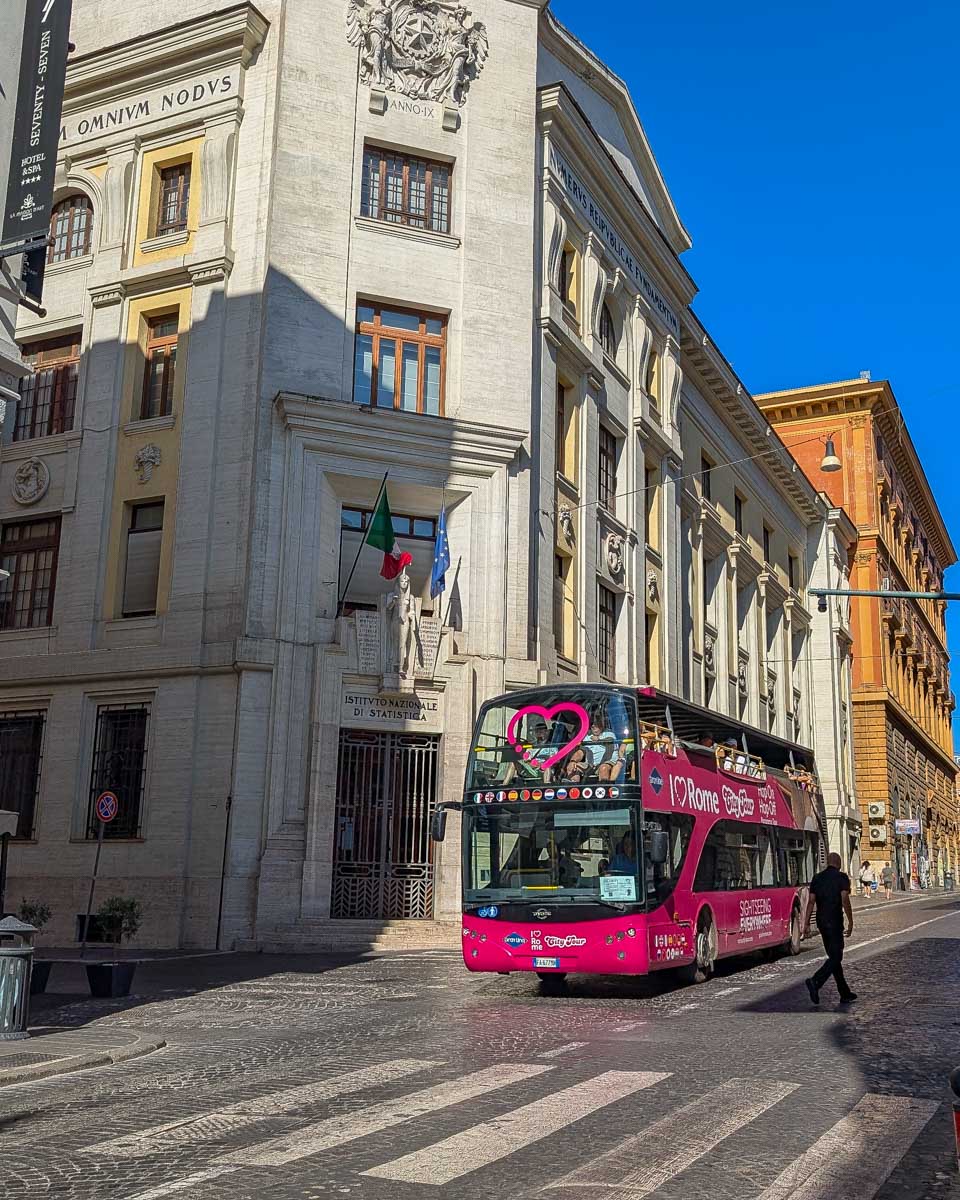

- When it makes sense: Budget trips, last-minute bookings, lesser-known routes.
- Best for: Backpackers, budget travelers, students, and solo travelers.
- Budget: Low — many routes are under €20; often cheaper than trains and flights.
- Pros: Inexpensive, many direct routes, good for spontaneous trips, can reach destinations not connected by railway.
- Cons: Longer travel times, limited legroom, occasional delays.
- Where to book: FlixBus, BlaBlaCar, Omio
For budget travelers, buses can be one of the most affordable and flexible ways to get around Europe! Companies like FlixBus and BlaBlaCar offer extensive networks across the continent, connecting not only major cities but also smaller towns and rural areas that trains might skip altogether. You’ll find plenty of routes for under €20, and sometimes tickets can be even cheaper if you book them early or travel during off-peak times.
Buses are also especially useful for spontaneous travelers, last-minute plans, or anyone looking to reach lesser-known destinations. While rides are usually longer than other transport options, many buses offer Wi-Fi, power outlets, and rest stops to make the journey more manageable.
With that said, don’t expect luxury. Legroom can be tight, delays are not uncommon, and comfort levels vary by route and company. But if you’re a student, backpacker, or solo traveler trying to make your travel funds go further, buses are an easy win.
Most tickets can be booked online through platforms like Omio or directly through providers’ apps, and it’s often possible to make changes or cancellations if your plans shift. For low-cost, no-fuss travel across Europe, buses are a solid choice.
Flights
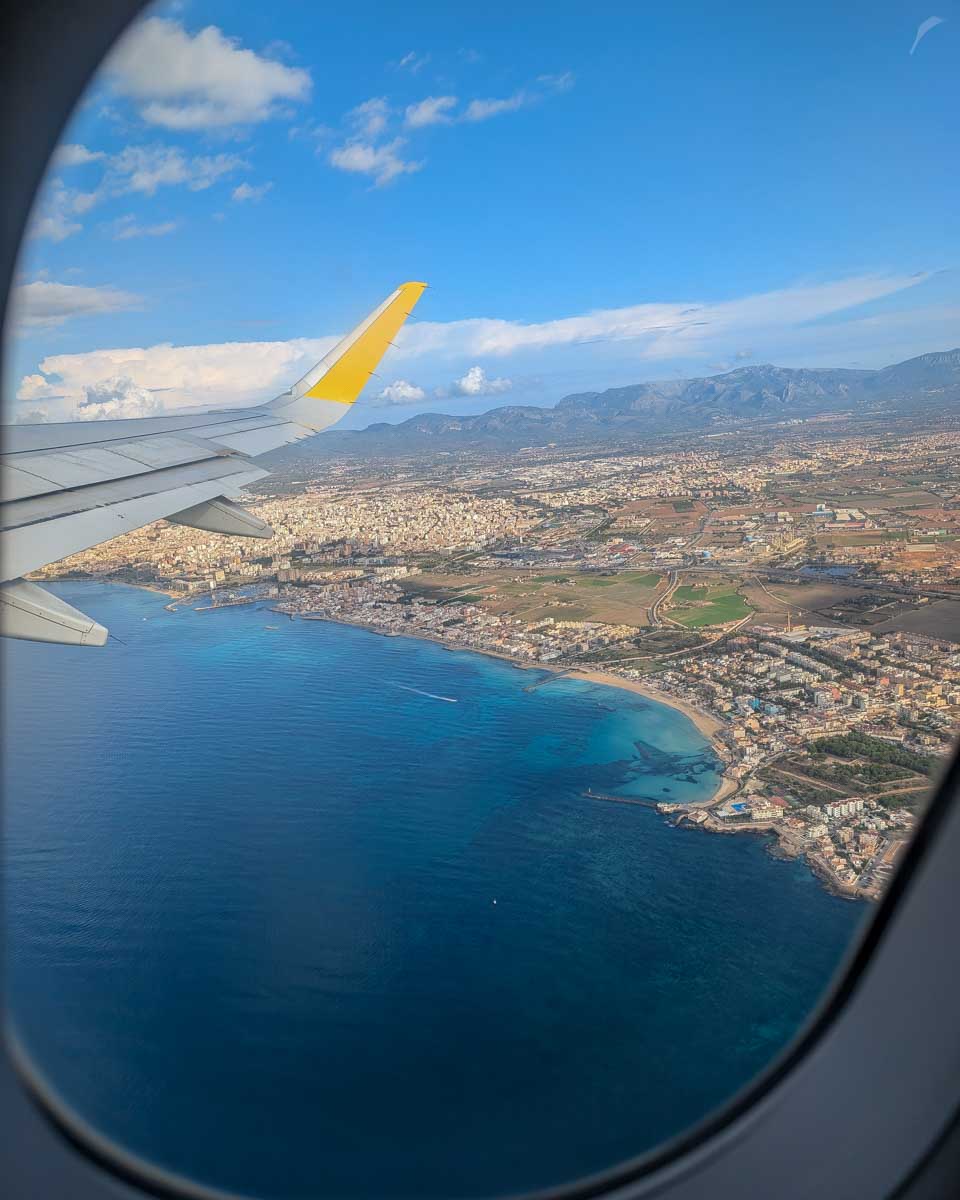

- When it makes sense: Cross-continent travel (e.g., Spain to Poland, or Portugal to Greece), when trains are inefficient.
- Best for: Time-strapped travelers, deal hunters, and anyone okay with airport logistics.
- Budget: Can be very cheap if booked early (only €20–€100), but extras (baggage, seat selection) add up fast.
- Pros: Fast, cheap options for long distances, frequent sales.
- Cons: Airports are often outside city centers, many hidden fees, airport time adds up.
- Where to book: Omio, Ryanair, EasyJet, Wizz Air
Flying across Europe is often the quickest way to cover long distances. If you’re hopping between countries or traveling from one side of the continent to the other, then a flight is probably your best bet. When trains aren’t efficient or don’t connect your destinations directly, a flight can save you hours, or even days, of travel time. This makes flying a smart choice for travelers who are limited on time but want to see as much as possible.
Budget airlines such as Ryanair, EasyJet, and Wizz Air offer super cheap fares if you book early, sometimes as low as €20 to €100, especially outside of the peak summer season. However, it’s important to keep an eye on extra fees for things like checked baggage, seat selection, and priority boarding because they can quickly add up and turn a bargain flight into an expensive one.
Airports are usually located outside city centers, so you’ll need to factor in extra time and cost for transfers to and from the airport. And of course, flying means navigating airport security and logistics, which can be stressful.
Still, if you’re flexible and watch for sales, flights can be surprisingly affordable and a huge time saver. Just be sure to plan ahead and budget for those extra fees to avoid surprises. To save money, we recommend comparing and booking flights on platforms like Omio and directly through budget airline websites.
Renting a Car
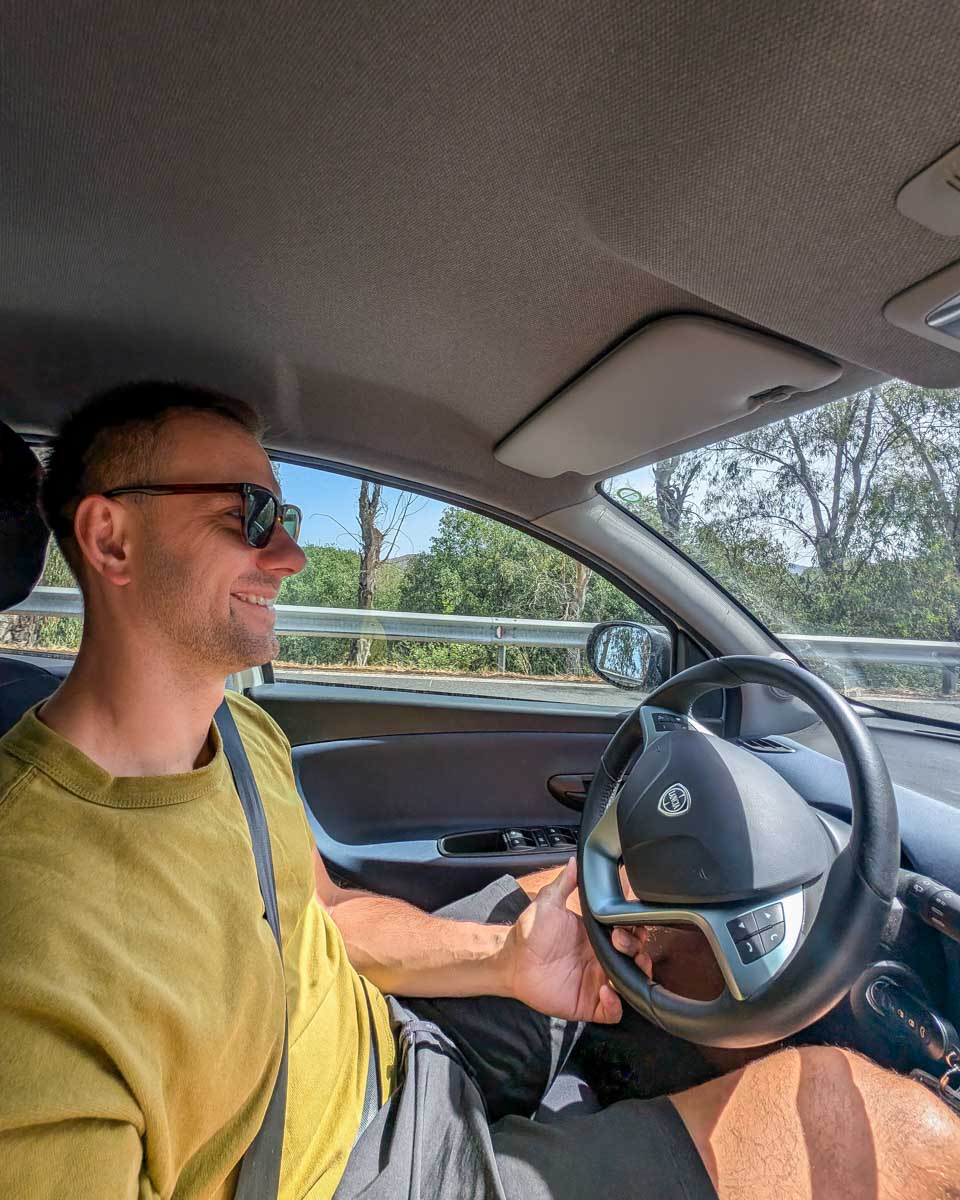

- When it makes sense: Rural trips, scenic routes, multi-country road trips.
- Best for: Adventurous couples/families, photographers, slow travelers.
- Budget: High — car rental can cost around €30-€70/day plus fuel, tolls, and insurance. Manual cars are cheaper; automatics cost more.
- Pros: Flexibility, access to remote areas, and travel at your own pace.
- Cons: Navigation challenges, parking headaches, tolls, and driving rules vary by country.
- Where to book: Discover Cars
We love the freedom of renting a car in Europe! It’s perfect for exploring rural areas, and there are so many scenic drives to enjoy. If you’re the kind of person who’s more about the journey than the destination, then we think you’ll love renting a car.
Having your own wheels lets you stop whenever and wherever you want and access places that public transportation simply doesn’t reach. You get to be the captain and enjoy your trip, your way.
That being said, driving in Europe requires some preparation. Each country has its own driving rules, toll systems, and road conditions, so it’s important to research these before your trip. Some countries also require an International Driver’s Permit (IDP), so check if you need one based on your nationality.
Be sure you’re comfortable driving in unfamiliar places, as road quality and local driving styles can vary, with some countries known for aggressive drivers. And while renting a car is amazing for rural road trips, it’s not ideal if you’re mostly staying in big cities. Parking is limited and Europe’s historic streets weren’t built with cars in mind!
It’s important to rent from a reputable company, too, which is why we recommend Discover Cars. We always use them to compare multiple rental companies and find the best prices. The site’s easy-to-use interface makes it simple to filter by car type, fuel policy, and pick-up/drop-off locations, so that you can find the best option for your trip.
Related Read: Before you hit the road, make sure you know what to watch out for! Our guide to common tourist scams in Europe covers how they work.
City Public Transit
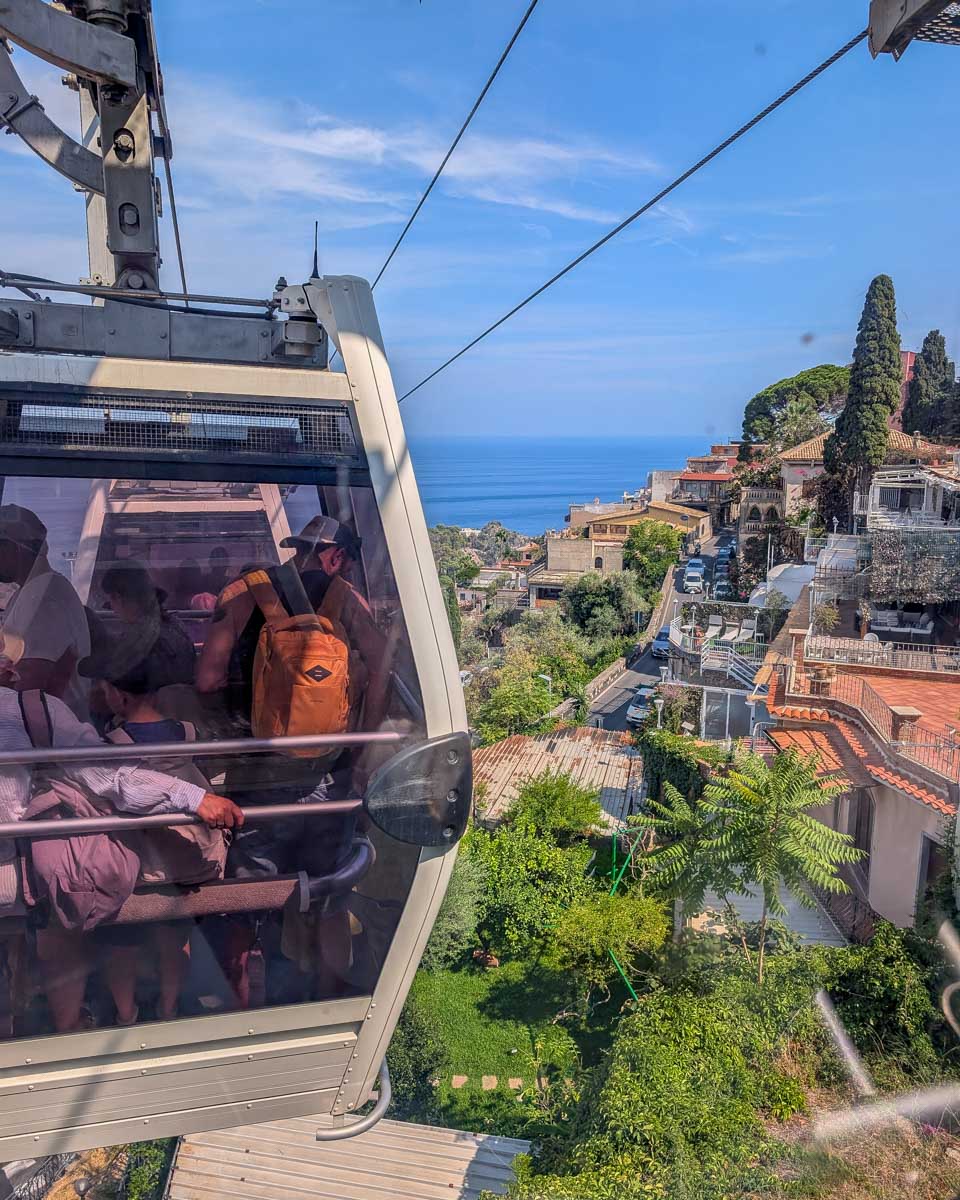
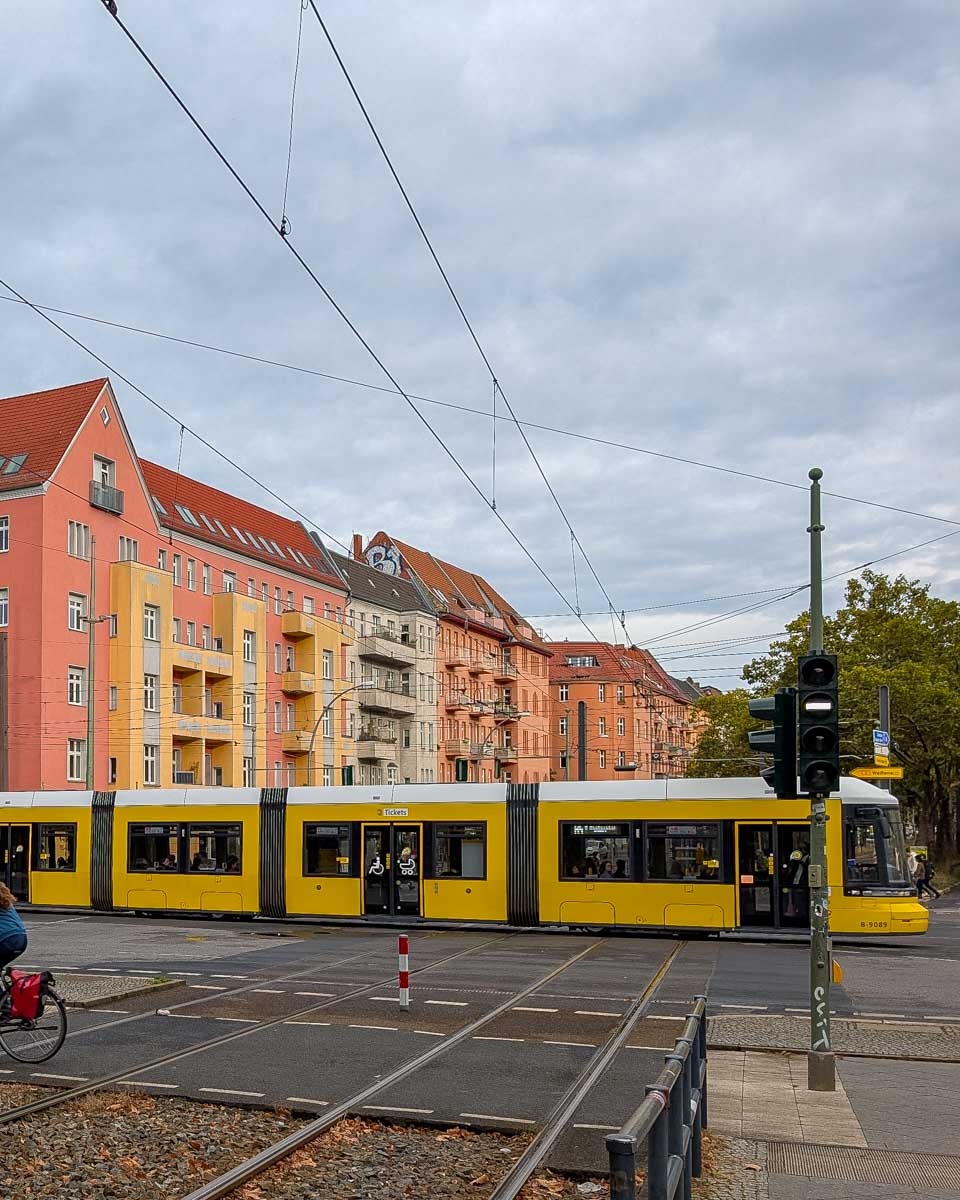
- When it makes sense: For city exploration. Especially for travelers staying several days.
- Best for: Everyone — especially solo travelers and budget tourists.
- Budget: Low — multi-day passes or fares usually under €5/day.
- Pros: Efficient, eco-friendly, affordable, easy to find routes with Google Maps or Citymapper.
- Cons: Can be crowded at peak hours. Limited service at night in some cities.
- Where to book: Differs by city. Can usually purchase tickets at the metro/bus stations or online. Look into transit cards for the destination you are visiting (e.g., Oyster in London, Navigo in Paris).
We’ve found that using public transit is usually the best way to explore European cities, especially if you’re staying for several days and want an efficient and affordable way of getting around. Most cities boast a well-developed transport network, usually comprising buses, metros, trams, cable cars, and sometimes even ferries! This is how locals in European cities get around day to day, so we think it’s a great option for every type of traveler.
One of the best things about public transport is that it tends to be very budget-friendly. Lots of cities offer multi-day or weekly passes that can save you a small fortune compared to using taxis or rideshares all the time! Tickets and transit cards are usually available at metro stations, bus stops, or online. Popular examples include the Oyster card in London and the Navigo pass in Paris, both of which simplify travel across multiple modes of transit.
Plus, apps like Google Maps and Citymapper are a godsend, as they can show you routes, schedules, and real-time updates. Citymapper will even tell you which platform you need to be on, and which metro lines have air-con!
Keep in mind that public transit can get crowded during peak hours, so if you prefer a quieter ride, try to avoid rush hour if possible. Also, some cities have limited night service, so it’s a good idea to check schedules if you plan to be out late.
Rideshares and Taxis
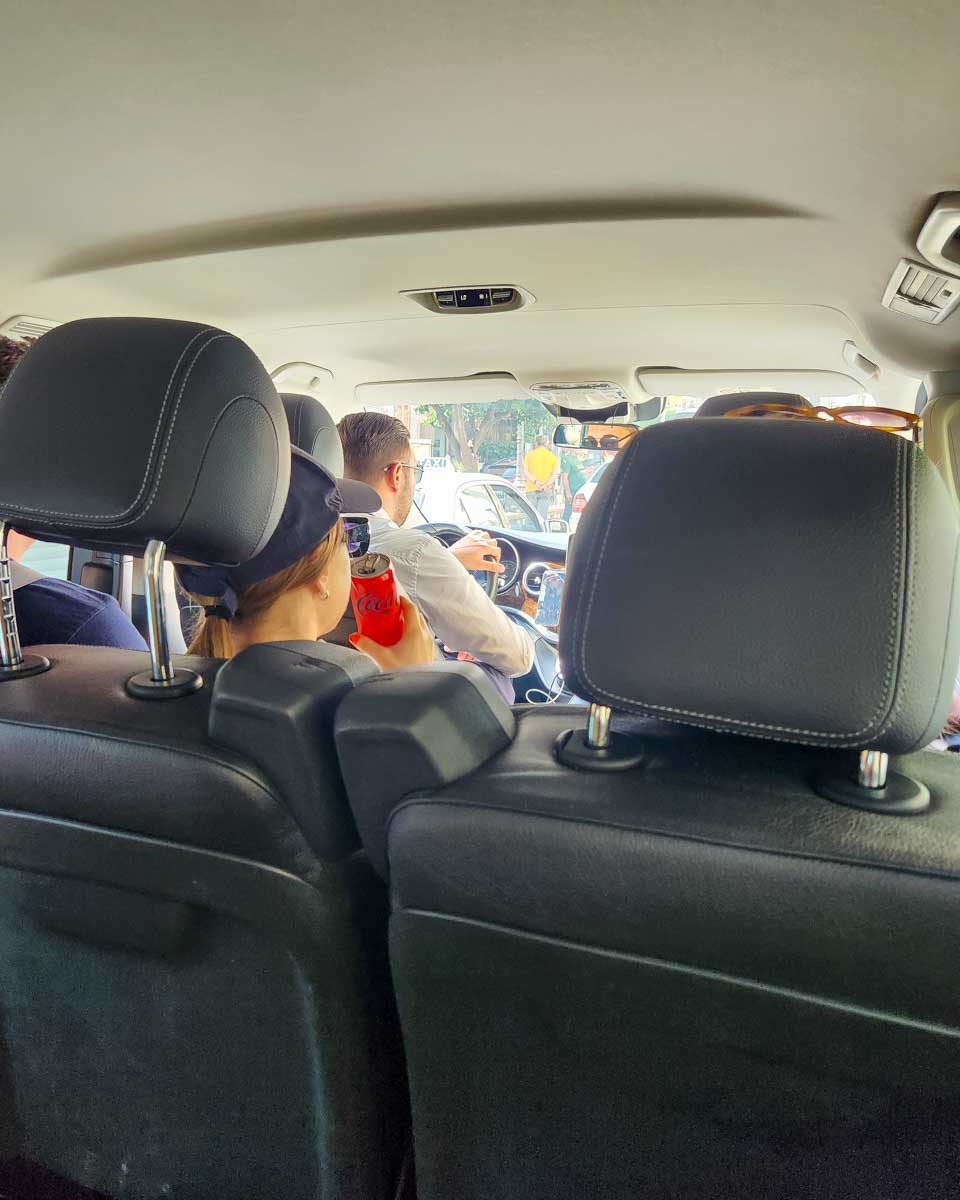
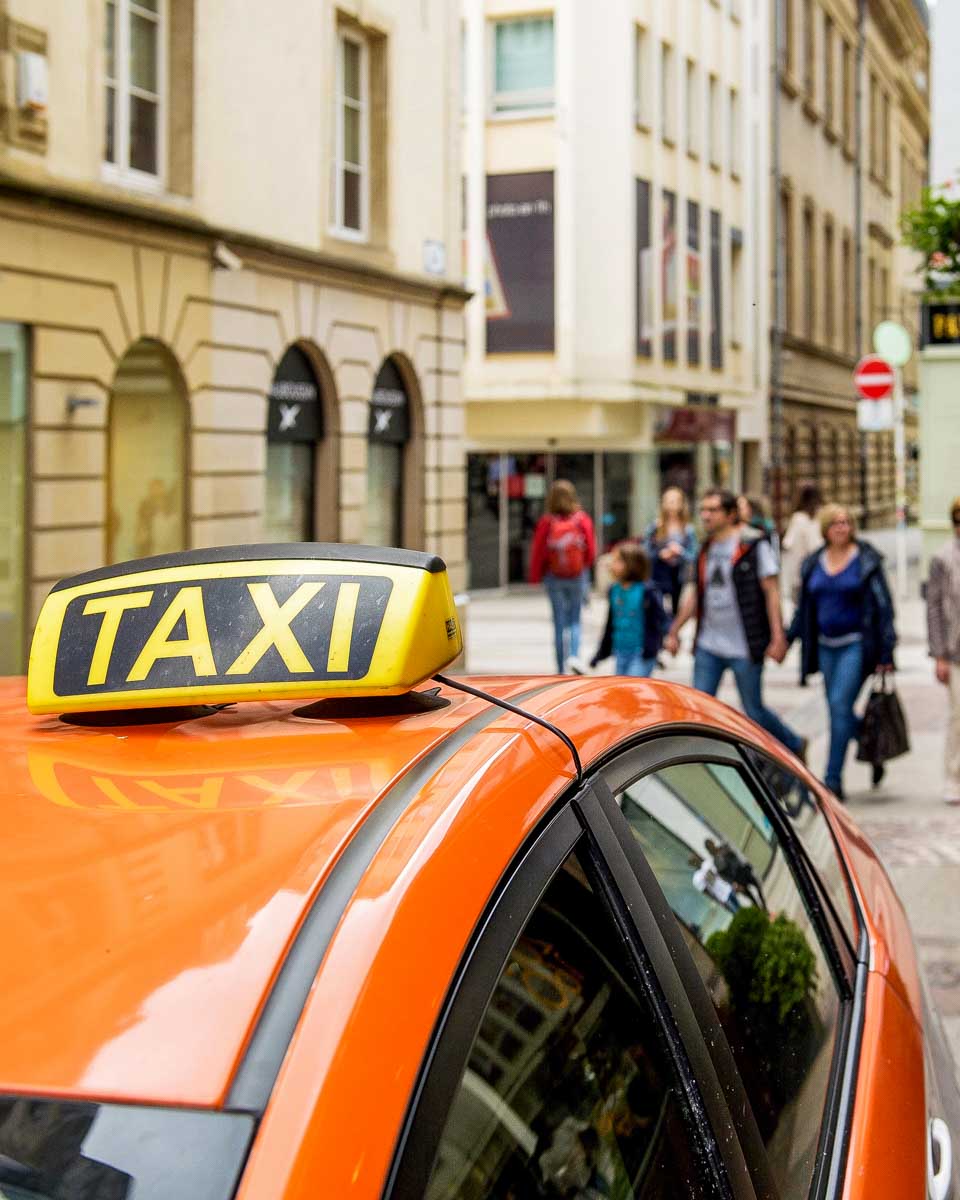
- When it makes sense: Late-night arrivals, heavy luggage, rural areas with no transit, and convenient city exploration.
- Best for: Families/couples, travelers with mobility needs, safety-conscious travelers.
- Budget: Medium to high — varies by city and time of day. Rideshares are usually cheaper than taxis in many cities, but more expensive than public transit.
- Pros: Convenient, reliable, often app-based.
- Cons: Not available in all countries; surge pricing; watch for taxi scams.
- Where to book: Varies by city, but some popular apps include Uber, Bolt, Free Now, Cabify, and BlaBlaCar
Rideshares and taxis are a great choice when convenience, comfort, and safety matter most. We primarily use them for late-night journeys and airport runs – especially when we have heavy luggage! It’s always great to have a backup when public transit isn’t available. Sometimes it is worth paying extra for a door-to-door ride without the hassle of navigating unfamiliar transit routes.
We almost always use rideshare apps like Uber, Bolt, Free Now, Cabify, or BlaBlaCar for peace of mind. For us, they usually beat traditional taxis because you agree the fare upfront and you can track your driver’s location in real time, which helps avoid scams or overcharging.
Rideshares also usually allow you to rate drivers, adding another layer of accountability. You can also contact the rideshare company for support if anything does go wrong. Prices can fluctuate during busy times due to surge pricing, so it’s wise to check multiple apps if you’re in a bigger city, as you can save money that way.
However, rideshares aren’t available everywhere, especially in smaller towns or less developed areas, so you may need to opt for a taxi instead. In this case, make sure it’s a licensed one and confirm approximate fares before starting the ride.
Ferries


- When it makes sense: Island hopping (Greece, Croatia), traveling to another country across water (e.g., Italy to Spain), or for the views.
- Best for: Scenic travelers, adventure seekers, slow travelers.
- Budget: Moderate — prices vary widely (€10–€60); overnight cabins cost more.
- Pros: Beautiful views, fun experience, often less hassle than flying.
- Cons: Slower, weather-dependent, limited schedules.
- Where to book: Omio, Direct Ferries, AFerry
Ferries are a fantastic option for travelers who want to combine transportation with a scenic adventure. They’re especially popular for island hopping in places like Greece and Croatia, but you can also travel between certain countries via ferry – for example, from Spain to Italy or England to France. They’re not always the fastest way to travel, but they can offer a relaxing and memorable way to get from A to B.
One of the biggest perks of ferries is that many routes allow overnight travel with cabins on board, so you can save on accommodation and wake up ready to explore a new destination. And some locations, such as many Greek islands and certain Croatian coastal towns, are only accessible by ferry. So sometimes, you have no choice but to take the ferry!
While ferries tend to be slower than planes or trains and their schedules can be limited, the journey itself can be a highlight of your trip. Weather can sometimes disrupt ferry services, so it’s wise to keep that in mind during your planning. And if you’re prone to sea sickness, be sure to pack some meds – I’ve definitely gotten sick on a ferry before!
Booking your ferry tickets is easy on platforms like Omio, Direct Ferries, or AFerry, where you can compare routes, times, and prices. If time isn’t an issue and you’re looking for a laid-back, comfortable travel experience, then we think ferries are ideal. We actually think they’re pretty underrated!
Related Read: Need help planning your trip? See our guide on the Best Time to Visit Europe to decide when and where to travel!
How to Choose the Best Option

Choosing the best way to get around Europe really depends on the type of trip you’re planning. You really need to think about the pace you want to move at and where you’re going.
Each transportation option has its strengths, and most travelers end up using a mix of them. For example, on our last trip, we took a few train rides, a budget flight, and then rented a car. To help you figure out what works best for your itinerary, budget, and travel style, we’ve broken down the key factors to consider when deciding how to get around. Here’s what to think about before you book.
What is the length of your trip?


How long you’re traveling for makes a big difference in how you should get around Europe. If you’re on a short trip of just 1-2 weeks, then we strongly suggest sticking to faster options like budget flights and high-speed trains. Unless you’re sticking to one region, buses and car rentals will take up too much of your time!
However, for longer trips of 3-6 weeks (or more), you can afford to slow down. Buses and regional trains become great budget-friendly options, and a Eurail or Interrail pass may save you money. Renting a car for a few days is also worthwhile if you’re going off the beaten path a bit more!
And if you’re traveling long-term on a gap year or as a digital nomad, a Eurail or Interrail Pass can be a great investment. You might also look into a long-term car lease if you want to stay mobile.
How many countries are you visiting?


The number of countries on your itinerary can help determine the most efficient way to get around. If you’re visiting one or two countries, there’s no need to overcomplicate things. Trains, buses, and public transport will cover most routes. And if you’re planning to explore extensively within a single country, you can get a single country rail pass to save you money and add flexibility.
For trips covering three to five countries, a multi-country Eurail or Interrail Pass can be a smart investment. It simplifies travel by letting you hop on most trains without having to book each leg separately. It’s great for fast-paced itineraries or spontaneous plans!
If your trip includes six or more countries, you’ll want to mix and match. Use trains for scenic and mid-range routes, budget flights or long-distance buses for long-distance travel, and rely on public transit within cities. Having a flexible approach will keep things smooth and cost-effective.
What is your budget?


Your budget plays a big role in shaping how you’ll get around Europe. If you want to do it on a shoestring budget, buses like FlixBus and budget airlines like Ryanair are your best friends. Keeping your dates flexible and traveling light will help you snag the best deals. Use public transport wherever possible to keep costs down.
For a mid-range budget, mix it up! Trains offer a great mix of comfort and convenience, while budget flights can help you balance saving time and money when you’re traveling further. It’s often worth renting a car in more remote areas, and within cities, you can mix public transit with the occasional rideshare.
If you’re planning a luxury trip, you can splurge on first-class train tickets, and going business class makes flying much less stressful. You might even want to consider hiring a private driver or booking premium car rentals for personalized road trips.
Are you visiting big cities or rural countryside?


Your destination type matters a lot when deciding how to get around. If you’re sticking to big cities, trains and public transportation are by far the most efficient and stress-free way to travel. This way, you’ll avoid parking nightmares, differing rules, and heavy traffic. Most major cities have excellent metro and bus networks, and most are walkable too.
But if you’re heading to remote villages or natural beauty locations, renting a car is probably your best option. Places like the Scottish Highlands, Tuscany’s rolling hills, or Slovenia’s alpine lakes often don’t have reliable public transit, and exploring them with your own vehicle is an incredible experience!
For mixed itineraries, combine both. Use fast trains between major cities, then rent a car for a few days to explore more rural areas. This hybrid approach offers the best of both worlds!
Do you want to travel sustainably?


If sustainability is important to you, trains and buses are the most eco-friendly ways to get around Europe. Trains, in particular, produce far fewer carbon emissions than flights or rental cars, and many European rail networks are powered by renewable energy. Buses are also a solid low-emission option, especially for shorter trips.
We’ve found that a good rule of thumb is to avoid flights under 600 kilometers (372 miles). In this case, it’s often just as fast to travel by train once you factor in airport travel, security lines, and boarding time.
Some countries are now making it even easier to travel green! Germany and Austria, for example, offer discounted regional train passes and promote green-certified train options.
And choosing sustainable transport doesn’t just reduce your environmental impact. It can also be a great chance to relax and enjoy the scenery. Honestly, when we’ve been traveling nonstop, I sometimes just enjoy a slower journey because it’s a great chance to read or catch up on my favorite shows!
Tips for Stress-Free Travel


Knowing what to expect is the best way to prevent stressful situations! By researching your destinations in advance, checking local transit options, and mapping out your route, you’ll avoid a lot of the common headaches travelers face.
Whether you’re hopping between capital cities or exploring small countryside towns, a bit of preparation goes a long way. Below are our top tips to help make your trip smoother, more efficient, and way more enjoyable, so that you can focus less on logistics and more on the fun stuff.
- Book in advance: This is the best way to save money on train tickets and flights! And at Christmas or during the peak summer season, things book up well in advance. Secure your tickets early if you don’t have flexible dates!
- Use trusted companies: Not all booking companies are trustworthy, so get your tickets through tried and tested options. We use Omio to book most of our transportation in Europe, from trains and buses to ferries to flights! It’s so great to be able to use one platform to compare all of the best options.
- Use offline maps: Download the area you are travelling to as an offline map on Google Maps in advance. This will help you navigate away from WiFi, even if you lose cell service!
- Download helpful apps in advance: Research which rideshare, taxi, and public transit apps are most commonly used in your chosen destination(s). Download them before you go so that you’re prepared!
- Keep your passport accessible: When traveling between countries by bus or train, you may be asked for your passport or visa by border personnel. Keep it on you at all times during your journey and have it ready to show when they ask.
- Always check visa & ID requirements: Make sure you have the proper documentation for every country you’ll be visiting on your trip. Check the visa requirements for each one individually. For example, you may have a Schengen visa, but that doesn’t cover the UK and Ireland. Some countries also require an electronic travel authorisation (ETA), which you must organise before you arrive.
- Arrive early: You may not have to turn up 2 hours before your train or bus leaves, but don’t leave it until the last minute, either! It’s always a good idea to turn up early and secure your seat. A good rule of thumb is to get to the station 20-30 minutes before departure, especially if you’re unfamiliar with the station layout and need to find your platform.
- Take care of your valuables: Unfortunately, thieves often operate on public transport. Keep your valuables close to you, in a cross-body bag if possible, and keep an eye on larger bags, too.
Related Read: If you want to go to Europe but don’t know exactly where, see our blog on the best places to visit in Europe for our top recommendations and personal favorite places!
Thanks for reading!

We hope you found this post helpful as you plan your European vacation! We have found a combination of these modes of transport to make for a streamlined travel experience, and don’t be afraid to try something new. Some of my favorite travel days came from conquering a local metro system – talk about getting to know a city!
Before you go, check out our other Europe travel blogs. As long-time travelers, we love sharing our best travel tips or favorite places with fellow adventurers. And if you have any questions about how to get around Europe or travel in general, don’t hesitate to leave a comment below!
